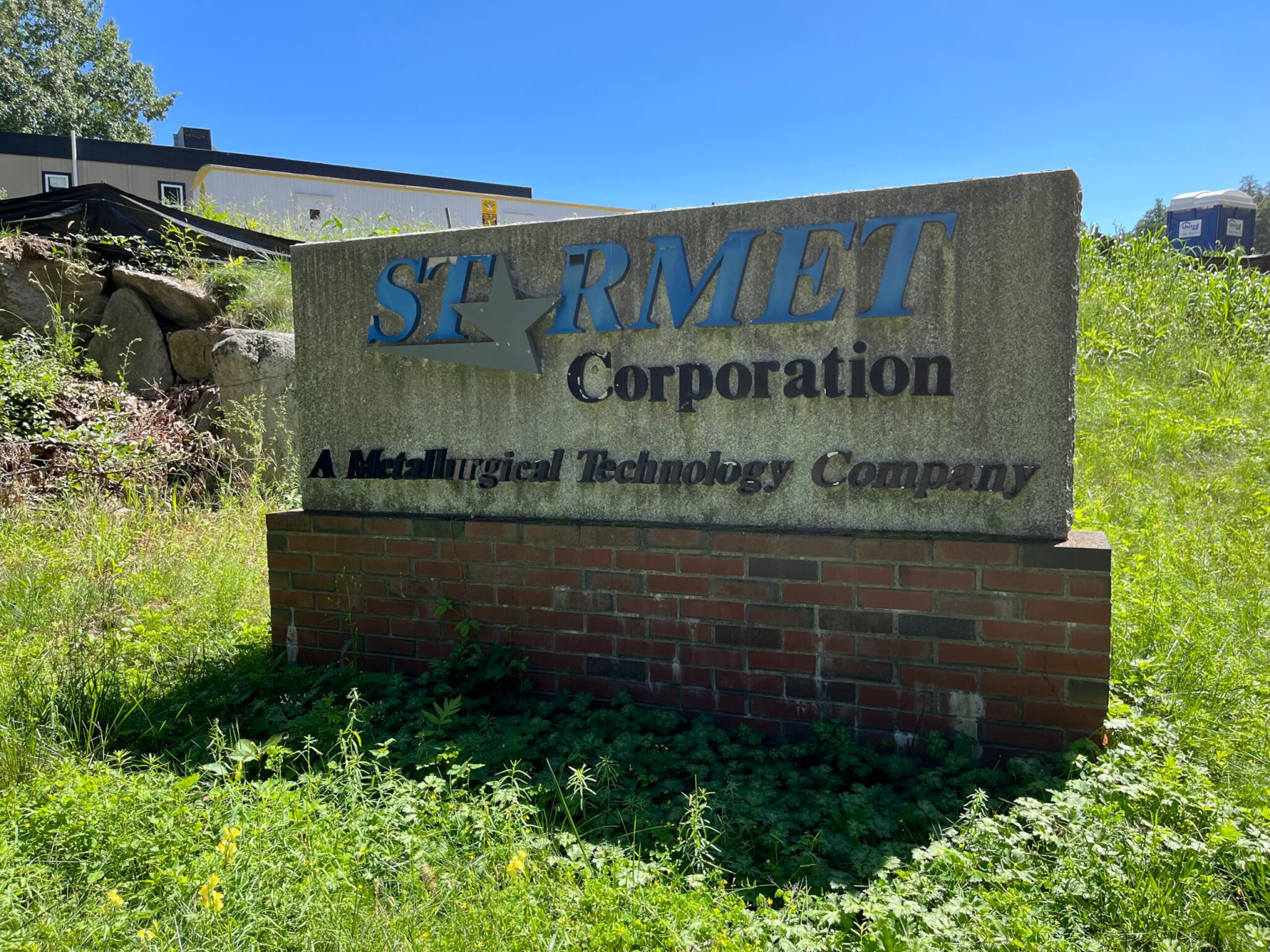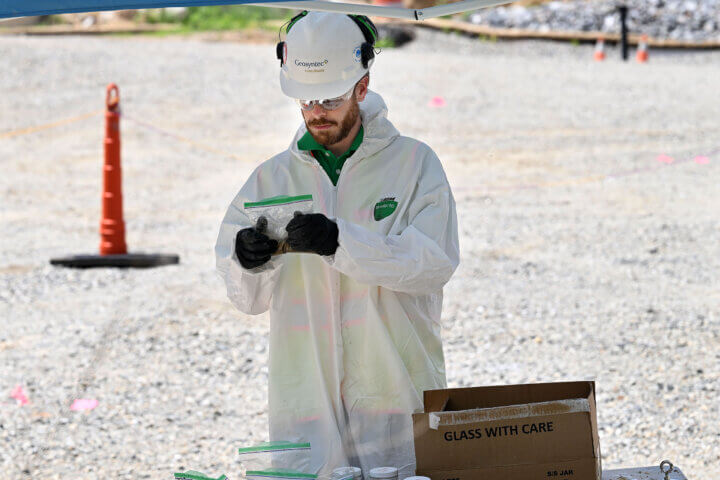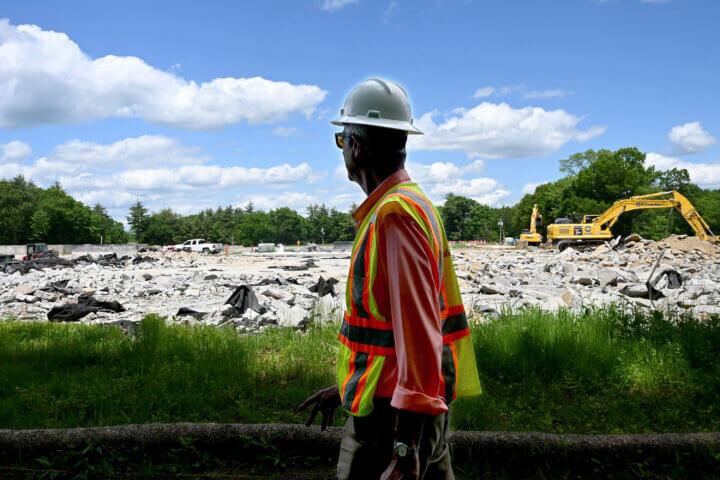When you’re driving along Main Street toward Maynard, it’s kind of easy to miss the Nuclear Metals, or Starmet, site at 2229 Main.
Set up on a hill, covering 46 acres, it’s not something the casual driver would notice. But the property has been a toxic thorn in Concord’s side since the late 1950s.
The Environmental Protection Agency will hold an overview meeting on October 11, updating the public on the history of the site, the current status of the work, and what the future might look like.
“We will be providing the background to the site for people who haven’t been following it throughout time,” said Kara Nierenberg, the regional project manager at EPA.
Nierenberg, speaking to the town-appointed 2229 Main Street Oversight Committee this summer, emphasized the October EPA meeting will be separate from that committee’s work.
“It will be the building blocks of the process, without getting into the nitty-gritty details of the remediation or diving into the work [you’re] doing,” she said.
Nuclear Metals specialized in research and manufacturing of depleted uranium, beryllium and other hazardous materials, according to the Nuclear Regulatory Commission. From 1958 to 1985, the waste was processed and dumped into an unlined holding basin on the site.
From the mid-1970s through 1989, depleted uranium anti-armor munitions for the U.S. Army were the primary product.
In 1997, the company was renamed Starmet. In June 2001, the site was added to the federal Superfund list and cleanup efforts began.
Superfund, passed in 1980, grew out of a series of high-profile environmental disasters related to the mishandling and disposal of toxic waste, the most famous being the Love Canal chemical dump in Niagara Falls, New York.
The buildings on the Starmet site came down starting in 2011. Soil has been excavated and removed and other work completed.
EPA Public Affairs officer Dave Deegan wrote in an email that the site cleanup has been parsed into six tracks:
- Sweeping Pile Soils: Two smaller soil areas being addressed for PCBs and uranium contamination. Remedial Design was approved by EPA in September 2022 and on-site areas were excavated to cleanup standards between November 2022 and April 2023. Soils were disposed of off-site.
- Off-property groundwater: A groundwater extraction and treatment system was installed in 2017 under the EPA Removal Program and the groundwater extraction network currently being expanded to limit the flow of contaminated groundwater from reaching Acton drinking water wells. The final Remedial Design was approved by EPA in September 2022 and the work is underway. Construction is expected to be completed by the winter of 2024.
- Sitewide Soils: The design for the remainder of the on-site soils (beyond the Sweeping Piles soils) is being finalized. This work will address the majority of the on-site soils outside of the Holding Basin. The work will include excavation and off-site disposal and will be performed between 2023 and 2028.
- Holding Basin: The design for the Holding Basin remedy, which includes the installation of a 90’ deep containment wall and impermeable landfill cap, is underway and expected to be completed in early 2025. Construction will likely take up to two years.
- In-site Sequestration: Soils within and adjacent to the Holding Basin will be addressed using in-situ sequestration, which is a chemical reaction that decreases the mobility and toxicity of uranium in soil. The design for this work is currently underway and expected to be completed in 2025. Construction of this feature will likely take one year.
- On-property groundwater treatment: An on-site groundwater treatment plant was built in 2022/2023 to treat groundwater. Installation of additional extraction is underway.
In 2007, Town Meeting voters changed the zoning bylaw, allowing residential redevelopment of the site. That designation means the EPA must bring the site up to residential standards. In April 2021, the committee released a 64-page report outlining possible reuses for the site.
“The Committee has developed an overarching ‘Master Plan’ concept for redevelopment of the site and then identified three potential redevelopment options that fit within the ‘Master Plan’ framework. Each of these options has been assessed against committee principles for reuse, namely the inclusion of multiple uses, environmental and fiscal sustainability and community synergy,” the report reads.
As of now, Concord does not own the site. Part of the committee’s charter included a recommendation that the Select Board move to buy the land once the site had been cleaned adequately.
“I think both EPA and the town want this property to be a productive property, whether we own it, or somebody else owns it. So, it becomes an asset to the community, whether that’s private ownership or municipal ownership.” Chairman Paul Boehm said at the July meeting.






